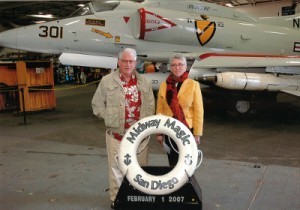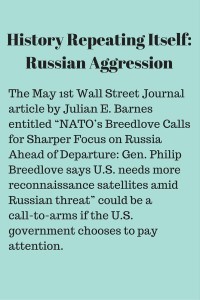Phyllis Zimbler Miller's Blog: Phyllis Zimbler Miller Author, page 11
August 14, 2016
Remembering the Non-Jewish Victims Murdered by the Nazis

As I have written about before, I am currently involved in writing a screenplay THE RED LETTER about the Israeli Nazi hunter Tuviah Friedman, whose 15-year quest led to the finding of Final Solution architect Adolf Eichmann. Yet, while I often write about the mass murder of Jews by the Nazis, I do not mean to overlook the murder of so many other Nazi victims including Gypsies, homosexuals, political dissidents, and mentally deficient people.
As Ina R. Friedman says in her book THE OTHER VICTIMS: FIRST-PERSON STORIES OF NON-JEWS PERSECUTED BY THE NAZIS: “Of all Hitler’s intended victims, only Gypsies and Jews were to be exterminated completely. No member of these groups, from infants to grandparents, was to be permitted to live.”
The Gypsies, who are more correctly called Romani, are on my mind as I prepare to visit Germany. This will be the first time I have returned since May 1972 when my husband and I left Munich where we had been stationed with the U.S. Army. (We were NOT in Munich in September 1972 when 11 Israeli Olympic athletes were taken hostage and murdered by the Palestinian terrorist group Black September.)
When I am in Munich again I hope to re-visit Dachau, the first Nazi concentration camp, which opened in March 1933 just two months after Hitler took over as Reich Chancellor of Germany. I will never forget seeing three Romani standing together in a doorway at Dachau — two men and a woman — and thinking that they too had come to mourn the murdered victims of their people.
When I was last in Berlin my husband and I had security clearances so that we could not go into East Berlin. Now that the Berlin Wall has fallen I will be staying in what was formerly East Berlin. And there are two memorials in Berlin that I plan to see:
The first is the Memorial to the Murdered Jews of Europe designed by architect Peter Eisenman and engineer Buro Happold.
The second is the Memorial to the Sinti and Roma Victims of National Socialism designed by Israeli artist Dani Karavan.
While it is important to honor the memory of the Nazis’ victims commemorated by these memorials, it is equally important to remember the history that these memorials represent as well as the often-quoted sentiment: “Those who don’t know history are doomed to repeat it.”
I can only hope that the competition between countries taking place at the Rio Olympics right now continues to be the only arena where countries come to blows with each other. The world does not need more memorials to future murdered peoples.
Click here to read about Dachau.
Click here to read about the screenplay THE RED LETTER.
© 2016 Miller Mosaic LLC
Phyllis Zimbler Miller (@ZimblerMiller) has an M.B.A. from The Wharton School and is the author of fiction and nonfiction books/ebooks. Phyllis is available by skype for book group discussions and may be reached at pzmiller@gmail.com
Her Kindle fiction ebooks may be read for free with a Kindle Unlimited monthly subscription — see www.amazon.com/author/phylliszimblermiller — and her Kindle nonfiction ebooks may also be read for free with a Kindle Unlimited monthly subscription — see www.amazon.com/author/phylliszmiller
August 7, 2016
Researching the Past: Not Everything You Think You Know Is True

I have been engaged in researching the past of Richard III as well as my personal past in Munich in the early 1970s, and in both cases there are stories told that are not true.
In the case of Richard III, I am re-reading for my book club Josephine Tey’s brilliant detective novel THE DAUGHTER OF TIME, which looks at the persistent story of Richard III having killed his two young nephews — a story that in the light of neutral research is most likely NOT true.
If you are at all interested in the last Plantagenet king, do read the novel and then look up some of the cited sources.
And now, in preparation for a trip to Germany, I have learned the falsehood of the story I had been told about the U.S. Army building in Munich, Germany, where I worked for the 66th Military Intelligence Group.
I had been told all those years ago that the building had formerly been the headquarters of the Nazi Luftwaffe. Yet, thanks to Wikipedia today, I learned that the building was actually the site of a different Nazi organization — the Reichszeugmeisterei — and Wikipedia explains:
The Reichszeugmeisterei (RZM), formally located in Munich, was the first and eventually the primary Zeugmeisterei (quartermaster’s office), as well as the national material control office of Nazi Germany.
The main building became block no. 7 of the US-McGraw Kaserne. Since the withdrawal of US troops from Munich in the 1990s, the main building has been used by a satellite department of the Police Headquarters of Munich.
On the other hand, I am confident that the following anecdote from my Cold War memoir is true as this happened while my husband had the extra duty of motor officer and the account was told to him then:
The motor pool adjoining the entrance to the 66th MI Group had an interesting story. It seems that German workers were hired to surround the motor pool with a chain fence topped with barbed wire to stop the theft of army vehicles. The German workers assured the army personnel that the workers had been putting up barbed wire-topped fences for many years and were experts at the task.
Imagine the workers’ surprise when an army motor pool sergeant told the German workers that they were incorrectly installing the barbed wire fence top. “This is the way we have always done this,” a worker insisted. The sergeant said, “That may be. But we want the barbed wire to face outwards to keep people OUT, not face inwards to keep people IN.”
And an additional dive into history for me has resulted from my screenwriting partner Susan Chodakiewitz and I working on our screenplay THE RED LETTER. We have been studying various published accounts of the discovery of Nazi Adolf Eichmann in Argentina, and putting the info together from several books, we may have now come close to deciphering the actual sequence of events.
You can read the draft of my Cold War memoir TALES OF AN AMERICAN OCCUPYING GERMANY at http://budurl.com/TAintro
And click here to read my blog post about the Nazi hunter screenplay THE RED LETTER.
© 2016 Miller Mosaic LLC
Phyllis Zimbler Miller (@ZimblerMiller) has an M.B.A. from The Wharton School and is the author of fiction and nonfiction books/ebooks. Phyllis is available by skype for book group discussions and may be reached at pzmiller@gmail.com
Her Kindle fiction ebooks may be read for free with a Kindle Unlimited monthly subscription — see www.amazon.com/author/phylliszimblermiller — and her Kindle nonfiction ebooks may also be read for free with a Kindle Unlimited monthly subscription — see www.amazon.com/author/phylliszmiller
August 1, 2016
THE RED LETTER Screenplay: The One-Man Quest of a Nazi Hunter

While Holocaust survivor and Nazi hunter Tuviah Friedman was alive, Susan Chodakiewitz and I had promised to try to get a feature film made of his ultimately successful quest to find the Nazi Adolf Eichmann — the architect during World War II of the systematic murder of 6 million Jews and countless others.
For 15 years Tuviah persisted in his search until Eichmann was finally captured in Argentina and brought to Israel to stand trial. Even in the face of personal, financial and political obstacles, Tuviah never gave up his quest.
Susan and her husband first met Tuviah in 2000 in Beverly Hills where he had come to sell some of his original Nazi documents in order to obtain more operating funds for his Nazi Documentation Center in Haifa. Over the years of his ongoing visits to Beverly Hills Tuviah shared with Susan his Nazi hunter story as well as his desire for a feature film project based on his Eichmann quest.
Many years ago Susan and I met in karate classes and eventually became writing and exercise partners. In 2007 we invited Tuviah to Los Angeles to meet film producers, and this began our saga of trying to get a feature film produced.
Tuviah died in 2011. We were unable during his lifetime to produce the movie we promised. Yet this year in 2016 we are moving forward. Inspired by Tuviah’s life work and personal example of perseverance, we have just completed this project’s feature film screenplay, which we have titled THE RED LETTER.
The title THE RED LETTER refers to the letter in red ink that Eichmann wrote to Tuviah while Eichmann was in prison awaiting execution after a lengthy trial. Although Tuviah was forced to sell the original letter for ongoing operating funds for his Nazi Documentation Center, the letter remained an important symbol to Tuviah for the rest of his life.
Susan and I are determined to finish what we started — bring to the screen the universal story of one man’s quest to find justice for millions of murdered men, women and children.
We are now actively reaching out to both European and American movie producers for this project. (The main movie sequences take place in Poland, Austria, and Israel.) If you are a producer and might be interested in this project, please get in touch with us. Or if you know of movie producers who might be interested in this project, please share this blog post with them. We can be reached at pzmiller@gmail.com
© 2016 Miller Mosaic LLC
Phyllis Zimbler Miller (@ZimblerMiller) has an M.B.A. from The Wharton School and is the author of fiction and nonfiction books/ebooks. Phyllis is available by skype for book group discussions and may be reached at pzmiller@gmail.com
Her Kindle fiction ebooks may be read for free with a Kindle Unlimited monthly subscription — see www.amazon.com/author/phylliszimblermiller — and her Kindle nonfiction ebooks may also be read for free with a Kindle Unlimited monthly subscription — see www.amazon.com/author/phylliszmiller
July 25, 2016
Play AJAX IN IRAQ Deals With Military Rape and PTSD

Imagine Sophocles’ play AJAX set in modern-day Iraq. Then imagine Sophocles’ character of the Greek warrior Ajax being driven mad replaced by a female soldier repeatedly raped by her sergeant — both stories are interwoven in Ellen McLaughlin’s powerful play AJAX IN IRAQ now playing in Los Angeles.
As described on the theater company’s website:
Raw, dynamic, heartfelt, and visceral, Ajax in Iraq parallels the lives of ancient and modern heroes. This stunning physical drama grapples with issues that have become all too well known to the American public — war of occupation, PTSD, sexual abuse, and the price of committing combat troops to situations that may have no end.
Ellen Mclaughlin’s electrifying play intertwines the story of a AJ, a female US Army combatant, with the legend of Ajax, a Greek Hero of the Trojan War who’s story is said to be the first documented case of post-traumatic stress disorder.
The result is shocking, captivating, strangely humorous, and relentlessly honest.
The play can be very raw at times and the end of both storylines is not a happy one. Yet AJAX IN IRAQ is an important addition to those projects that look at these topics that can affect us all.
And what to me was also important is that there is a military rate for attending the performances plus the stripped down playbill has six blurbs under “AFTER THE CURTAIN: How you can support and get involved with our Military Veteran Community:”
NEW DIRECTIONS FOR VETERANS — www.newdirectionsinc.org — Focus is on supporting housihg and rehabilitating military rape survivors.
VETERANS IN FILM AND TELEVISION — www.vftla.org — Unites current and former members of the military working in TV and Film.
UNITED STATES VETERANS ARTIST ALLIANCE — www.usvaa.org — Local — Giving Veterans an outlet through the Arts. Contact: Keith Jefferys.
WOUNDED WARRIOR PROJECT — www.woundedwarriorproject.org — National — Multiple rehabilitative and transitional programs.
VOLUNTEERS OF AMERICA — www.voa.org — Local — Focus is on veteran homelessness.
USO —www.uso.org — National & Local — Great organization that puts overseas packages together.
For information on PTSD see my own links www.SolomonsJustice.com and www.InSupportOfOurTroops.com
For information on AJAX IN IRAQ see the theater company’s site at www.NotManApart.com
And remember, PTSD can result from non-combat experiences as well as combat experiences. If you or someone you love has symptoms, get help immediately — the sooner the better.
© 2016 Miller Mosaic LLC
Phyllis Zimbler Miller (@ZimblerMiller) has an M.B.A. from The Wharton School and is the author of fiction and nonfiction books/ebooks. Phyllis is available by skype for book group discussions and may be reached at pzmiller@gmail.com
Her Kindle fiction ebooks may be read for free with a Kindle Unlimited monthly subscription — see www.amazon.com/author/phylliszimblermiller — and her Kindle nonfiction ebooks may also be read for free with a Kindle Unlimited monthly subscription — see www.amazon.com/author/phylliszmiller
June 23, 2016
FREE: Kindle Ebook LT. COMMANDER MOLLIE SANDERS
My Navy thriller ebook LT. COMMANDER MOLLIE SANDERS (written with my husband Mitchell R. Miller) is FREE to download.
If you like an action story with a strong female protagonist, go to https://www.amazon.com/Lt-Commander-M...
And if you don't have a Kindle, you can get a free Kindle app for your iPad, iPhone, etc at http://budurl.com/freekindleapp
About LT. COMMANDER MOLLIE SANDERS:Lt. Commander Mollie Sanders
Lt. Commander Mollie Sanders is a U.S. Navy officer who has striven to be the best even if it earns her enemies.
A graduate of the Naval Academy, she is an electronic weapons officer tasked with coming up with new weapon designs.
When she gets assigned to an aircraft carrier as a Navy fighter pilot's backseater, a missile attack on her plane leads to a mission to try to save the port of Los Angeles from a suspected terrorist attack.
She must channel her overwhelming competitive drive in order to work as a team with other Navy personnel and the Coast Guards to find a needle in a haystack.
From there a twist in the mission takes her to Alaska, where the anti-missile defense site may have been compromised.
Next she bulldozes her way into being the first female assigned to a sub smaller than a boomer. She wants to be the one to test the new defensive weapons system she designed as the sub undertakes a reconnaissance mission to the hotly contested South China Sea.
She is unaware that her past is about to catch up to her present in a bizarre situation she could never have foreseen.
This U.S. Navy submarine sea adventure is an action-paced thriller.
June 16, 2016
The Limitations of a Two-Page Pitch for a Sci Fi Project

I’ve been writing paid pitches for agents and production company execs for both feature film screenplays and TV drama shows through the auspices of a terrific site — Stage32.com — for entertainment industry creatives. I choose to whom of the possible entertainment people hosting a pitch session I submit my written paid pitch and within a short time after the actual pitch date I get written feedback.
And herein lies my frustration:
The pitch can only be two pages long, which seems a reasonable length. But the critiques I have been getting continually say that the pitch does not sufficiently develop the dystopian world of 2049 (for feature film screenplay THE MOTHER SIEGE) or 2029 (for TV drama script UPHEAVAL when everything changes in a moment).
And after getting this feedback regularly, I realized sci fi pitches that need to set up a unique world are at a great disadvantage in a two-page pitch limit.
Think about this: If you’re pitching a modern-day story, the world is known. You can get to the protagonist, his/her want, and the obstacles very quickly in a pitch.
Or, if you’re pitching an historical story, that world is known too, although there may be a few specific historical points that need clarifying in a pitch.
Yet in a sci fi story the whole world has to be explained before the protagonist, his/her want, and the obstacles of that want can be made clear. Oops — you’re out of your two-page limit.
Here is one partial feedback comment from an agent that I got on THE MOTHER SIEGE pitch:
When creating a story like THE MOTHER SIEGE, it is extremely important to make sure the world and the rules of that world are completely fleshed out in the pitch.
And another partial comment from a production company exec on THE MOTHER SIEGE pitch:
You should never start a pitch with “this is trilogy” because you know the protagonist will thus survive so there isn’t any risk. Give a little more info about the world’s style too to set it apart from every other dystopia.
A partial UPHEAVAL pitch comment from an agent:
I would recommend creating a section (before the pilot synopsis) talking about this world and what it was like before Global Corp makes its takeover. How does a corporation have so much power to achieve takeover?
Another UPHEAVAL pitch comment from an agent:
I do not understand the logistics of taking all of the land mass west of the Mississippi. Does that mean there is barrier around the entire perimeter? That seems impossible from a technological perspective. It is a major plot point from which all the rules of the universe are set, so it is critical that is fully fleshed out to ensure consistency going forward.
As a writer this feedback is so frustrating because a) this is sci fi with all the tropes that this implies; b) I have discovered a real-world source for my imagined technological takeover; 3) global corporations do have tremendous power.
And if these four critiquers had read even the beginning of each script rather than the pitch, all these questions would have been answered. Which is why two-page pitches rather than the first five pages of a screenplay are so unrepresentative of sci fi stories!
In conclusion, I received the four emails with these passes all on the same day. Yet on that day I also received a lovely comment from someone who read THE MOTHER SIEGE story (from which the screenplay is adapted) on Wattpad:
I really enjoyed The Mother Siege and hope the sequels you have in mind come to fruition. I love dystopian/apocalyptic novels, and as a mom of 3 myself often consider what I would have to do to ensure my girls safety in a world of new rules. This is the first dystopian novel I’ve read that the leading character has the same mindset that I’d have in the given situation and I hope to be able to follow Natalie and the crew’s story later on.
Bottom line: The story of THE MOTHER SIEGE in 2049 came to me in a dream and I’m going to keep on trucking to get this story out. Then THE UPHEAVAL in 2029 naturally followed in order to answer more of the questions about how this world of THE MOTHER SIEGE came about.
You can read the story of THE MOTHER SIEGE on Wattpad at http://budurl.com/MSintro and the beginning chapters of THE UPHEAVAL on Wattpad at http://budurl.com/upheaval
And meanwhile, while I love Stage 32 making opportunities available for screenwriters to pitch their projects to entertainment industry professionals, I would like to see a three-page limit for sci fi stories. That extra page can go a long way to effectively setting up the alien/dystopian world and its rules.
© 2016 Miller Mosaic LLC
Phyllis Zimbler Miller (@ZimblerMiller) has an M.B.A. from The Wharton School and is the author of fiction and nonfiction books/ebooks. Phyllis is available by skype for book group discussions and may be reached at pzmiller@gmail.com
Her Kindle fiction ebooks may be read for free with a Kindle Unlimited monthly subscription — see www.amazon.com/author/phylliszimblermiller — and her Kindle nonfiction ebooks may also be read for free with a Kindle Unlimited monthly subscription — see www.amazon.com/author/phylliszmiller
May 30, 2016
What I Learned From the Musical HAMILTON About U.S. Troops

Today is Memorial Day 2016 and I’m inspired to write this post after listening over and over again to the musical track for the brilliant award-winning musical HAMILTON by Lin-Manuel Miranda: HAMILTON reminded me that the Revolutionary War was not won only by Paul Revere’s midnight ride and the opening shots at Lexington and Concord. The war was actually won by numerous battles fought by U.S. troops with very few resources at hand.
As the actor playing George Washington sings in the HAMILTON song “Right Hand Man” —
We are outgunned,
Outmanned,
Outnumbered,
Outplanned.
(Besides listening over and over to the HAMILTON musical track, I’m also slowly reading the book HAMILTON THE REVOLUTION by Lin-Manuel Miranda and Jeremy McCarter that includes notes on which parts of the musical deviate from the historical record.)
U.S. troops have been protecting the democracy and freedom of the people of the United States as well as the democracy and freedom of other people since that time. And once a year, before we set out for our day-off activities, it is important that we remember what Memorial Day really means.
The liberation of Europe from Nazi Germany:
One of the most important wars ever won by U.S. troops along with U.S. allies is World War II. This feat is something of which I am often reminded and which I feel is not always given its full due.
Yesterday I saw the special exhibit “State of Deception: The Power of Nazi Propaganda” curated by the United States Holocaust Memorial Museum. (This exhibit is currently on display at the Los Angeles Central Library in downtown Los Angeles. Click here for more info.)
The exhibit depicts the use of propaganda to rouse the German people to wage war against so many countries and to kill 6 million Jews and 5 million others — Gypsies, homosexuals, mentally deficient people, political opponents, etc. — in the Nazis’ program of deliberate extermination. This does not count the millions killed by the German war machine.
And then at the end of the exhibit are photos of the U.S. military liberating some of the concentration camps. The U.S. and its allies winning World War II saved the remnants of these prisoners and started Europe back on a road to democracy.
(While the Nazis killed 6 million Jews, they actually planned to kill 11 million Jews according to the Wannsee Protocol established at the Nazis’ Wannsee Conference on January 20, 1942. This Nazi plan included killing all the Jews in Europe, including in countries such as England and Ireland that the Nazis had not yet conquered.)
Having personally stood at Pointe du Hoc — a 100-foot cliff overlooking the English Channel — on the windswept Normandy beaches with the German pillboxes behind me, I can imagine the dread felt by the American and British forces landing on those beaches on D-Day June 6, 1944, with no cover to protect them from the nonstop German gunfire.
And yet those military forces struggled into the face of that brutal gunfire as the first step to liberating all of Europe — in which heroic fight so many of our military died.
For that bravery in the face of death in World War II and in all the other past and current (and future) battles fought by U.S. military men and now women to protect our way of life, I give thanks on this Memorial Day.
© 2016 Miller Mosaic LLC
Phyllis Zimbler Miller (@ZimblerMiller) is a member of the Department of Defense’s Bloggers Roundtable and frequently blogs about military topics. See her PTSD project site SolomonsJustice.com and her military novels at www.amazon.com/author/phylliszimblermiller
May 19, 2016
Support Documentary THE FACE OF PTSD Now!
The Face of PTSD Indiegogo Trailer from Malka MG on Vimeo.
Right now there is a crowdfunding project on Indiegogo to help combat PTSD — and I’m supporting this project! The hashtag for the project is #treatmentNOTjudgement!
It is said that 22 veterans commit suicide every day.
All of us are responsible for trying to help stop this. And Malka Media’s proposed documentary THE FACE OF PTSD can help with this terrible situation. (Malka Media is a trustworthy production company — the company’s documentary BACK IN TIME is on Netflix and Amazon.)
Click here now to go directly to the Indiegogo page to contribute. (I chose the level that gives a backpack to a homeless soldier via a project partner.) And after contributing, scroll down the Indiegogo page to read about the project’s charitable partners Soldiers’ Angels and Backpacks for Life.)
Besides reading more on the Indiegogo project page, click here to read the Military Times article “New documentary set to blast stereotypes of PTSD.”
If you haven’t yet gone to the Indiegogo page and contributed, click here to do so now!
© 2016 Miller Mosaic LLC
Phyllis Zimbler Miller (@ZimblerMiller) is a member of the Department of Defense’s Bloggers Roundtable and frequently blogs about getting help for PTSD. See her PTSD project site SolomonsJustice.com
May 10, 2016
U.S. Naval Readiness and the South China Sea

Mitch and Phyllis visit the USS Midway aircraft carrier in San Diego on February 1, 2007.
As a member of the U.S. Naval Institute and a WWII history buff, my husband Mitch has been an avid follower of the changing fortunes of the U.S. Naval fleet. Mitch’s knowledge helped us when we wrote the screenplay LT. COMMANDER MOLLIE SANDERS, which was a 2005 Nicholls Fellowship quarterfinalist. (This screenplay featured in part the hotly contested South China Sea.)
Then at the beginning of 2007 Mitch and I attended a conference in San Diego sponsored by the U.S. Naval Institute. One of the major concerns at that time was the necessity of the U.S. to expend more resources on Pacific Rim security concerns.
Now in 2016 security concerns over the South China Sea, with China encroaching on the islands there to the detriment of the claims of other nations, feature regularly in the news.
In this current internationally tense atmosphere, Mitch wrote a letter to Proceedings — the monthly magazine of the U.S. Naval Institute — about the U.S. Naval fleet.
Mitch’s opinion piece appears in the Comment & Discussion section of the May 2016 issue of Proceedings with the headline “Ahoy from the Zumwalt! The F-35’s New OODA Loop” and begins:
Former Secretary of Defense Donald Rumsfeld’s aphorism, “You go to war with the army you have, not the army you might want or wish to have at a later time,” has a corollary: You go to the war you have, not the war you might wish to have.
Captain Kirk’s and Colonel Kelly’s articles illustrate the point. While a few Zumwalt-class destroyers and F-35-equipped big-deck carriers may have a deterrent effect on potential adversaries, they will likely see no more combat than did General George S. Patton’s fictitious First U.S. Army Group (a D-Day deception) in World War II.
We are in a revivified Cold War. The potential aggressor states — Russia, China, Iran, North Korea — will probe the United States frequently, seeking and obtaining any territorial or other gains they can. But those conflicts will be contests of will, not of technology, for which Patton’s inflated rubber planes, tanks, and trucks would do almost as well as real DDG-1000s and F-35s.
FYI — Mitch and I adapted our screenplay LT. COMMANDER MOLLIE SANDERS and a prequel screenplay (NEEDLE IN A HAYSTACK) into the thriller novel LT. COMMANDER MOLLIE SANDERS on Amazon. If you have a Kindle Unlimited monthly subscription, you can read the Kindle ebook format for free. Click here now to see the book on Amazon.
And just released bundled as one Kindle ebook for a low price is BRAINS BEFORE BEAUTY — a trio of female protagonist thrillers by Mitch and me that includes LT. COMMANDER MOLLIE SANDERS. Check out BRAINS BEFORE BEAUTY now on Amazon.
© 2016 Miller Mosaic LLC
Phyllis Zimbler Miller (@ZimblerMiller) has an M.B.A. from The Wharton School and is the author of fiction and nonfiction books/ebooks. Phyllis is available by skype for book group discussions and may be reached at pzmiller@gmail.com
Her Kindle fiction ebooks may be read for free with a Kindle Unlimited monthly subscription — see www.amazon.com/author/phylliszimblermiller — and her Kindle nonfiction ebooks may also be read for free with a Kindle Unlimited monthly subscription — see www.amazon.com/author/phylliszmiller
May 2, 2016
History Repeating Itself: Russian Aggression

The May 1st Wall Street Journal article by Julian E. Barnes entitled “NATO’s Breedlove Calls for Sharper Focus on Russia Ahead of Departure: Gen. Philip Breedlove says U.S. needs more reconnaissance satellites amid Russian threat” could be a call-to-arms if the U.S. government chooses to pay attention.
The article begins:
MONS, Belgium—The U.S. has too few intelligence assets focused on the threat from Russia and should concentrate its technical capabilities on Moscow’s growing military might, NATO’s departing supreme allied commander said.
The U.S. has begun to build up the number of intelligence analysts examining Russia, which stood at 13,000 at the height of the Cold War before dipping to a low point of just 1,000 three years ago, said Gen. Philip Breedlove, the top military commander of the North Atlantic Treaty Organization, in an interview.
But Gen. Breedlove said the U.S. needs more technical intelligence assets, the kind of spy satellites the U.S. uses to keep an eye on both troop movements and terrorist training camps, focused on the threat from Russia.
My husband Mitch served during the Cold War as a U.S. Army intelligence officer with the 18th Military Intelligence Battalion from September 1970 to May 1972. During part of that time, as a GS-3 Department of the Army civilian, I worked for a unit of counter-intelligence in the 66th Military Intelligence Group.
In those days, of course, the 18th and the 66th did not have the full array of electronic tracking and computing technology that is available today. But we did have a clear understanding of our mission: to stop the Russians from invading Western Europe. And we had been trained to spot signs of Russian spying as I relate below.
My memoir of that time — TALES OF AN AMERICAN OCCUPYING GERMANY — starts with this true tale:
A middle-aged man sitting by himself at the restaurant table next to us said in English, “Excuse me. I see you are Americans.”
We nodded.
“Is this your first time in Copenhagen?”
“Yes,” I said.
“How long are you visiting?”
“A week,” Mitch said.
“Going to visit a beer factory?”
“We plan on taking the Carlsberg tour,” I replied.
The man nodded as if this was to be expected.
Then he said, “I’ve just returned from visiting Russia. The people there are so hard-working. These Danes are frivolous, only thinking about their own pleasure.”
It took only one heartbeat for me to realize that this was a classic espionage pick-up line – a Russian spy trying to cultivate friendship with American military personnel – that both Mitch and I had been warned about with our security clearances.
I looked at Mitch, and our knees touched below the plastic table. We said nothing.
The man continued, “In Russia I saw factories where the production levels have been rising consistently each year.”
At the same moment, without saying a word to each other, Mitch and I stood up, grabbed our trays and dumped them at the dirty dishes collection area.
Clasping hands, we ran downstairs from the second-story restaurant and raced towards Tivoli Gardens two blocks away.
Only when we had entered and run to the lighted fountains in front of The Bazaar did we slow and catch our breath.
“A classic pick-up,” Mitch said.
“Right off the pick-up script,” I said. “But how did he know to try?”
“My short haircut was a giveaway I’m in the army,” Mitch said.
Having been part of the American contingent stationed at the front-lines of the Cold War, I can only hope that Gen. Breedlove’s warning is acted upon in time.
FYI: TALES OF AN AMERICAN OCCUPYING GERMANY can be read for free on Wattpad as I seek a publisher for the memoir. Click here to read it now.
And if you want to read a published thriller — LT. COMMANDER MOLLIE SANDERS — that features the currently hotly contested South China Sea, click here now. (Free to read via Kindle Unlimited monthly subscription.)
© 2016 Miller Mosaic LLC
Phyllis Zimbler Miller (@ZimblerMiller) has an M.B.A. from The Wharton School and is the author of fiction and nonfiction books/ebooks. Phyllis is available by skype for book group discussions and may be reached at pzmiller@gmail.com
Her Kindle fiction ebooks may be read for free with a Kindle Unlimited monthly subscription — see www.amazon.com/author/phylliszimblermiller — and her Kindle nonfiction ebooks may also be read for free with a Kindle Unlimited monthly subscription — see www.amazon.com/author/phylliszmiller
Phyllis Zimbler Miller Author
- Phyllis Zimbler Miller's profile
- 15 followers



